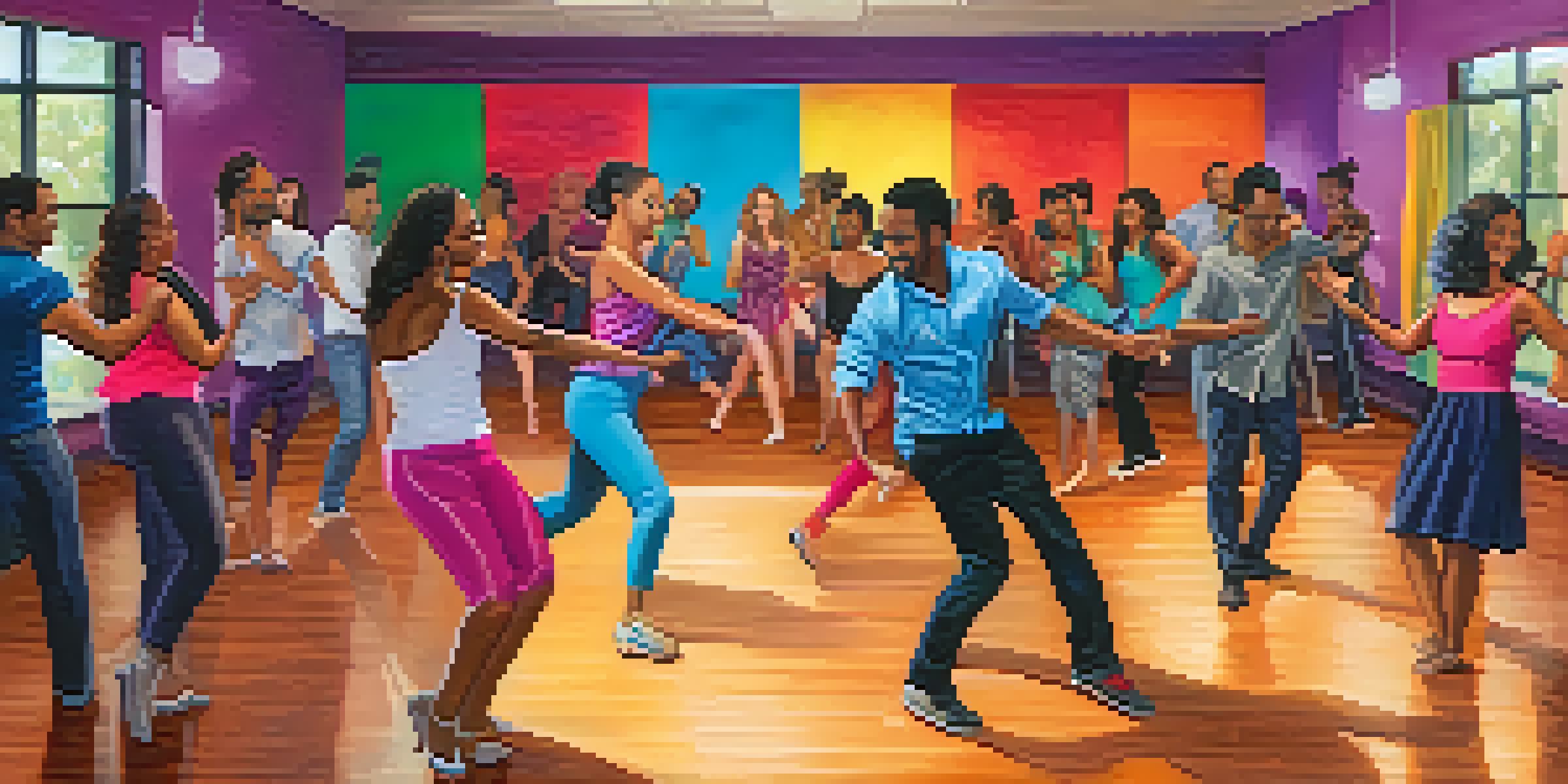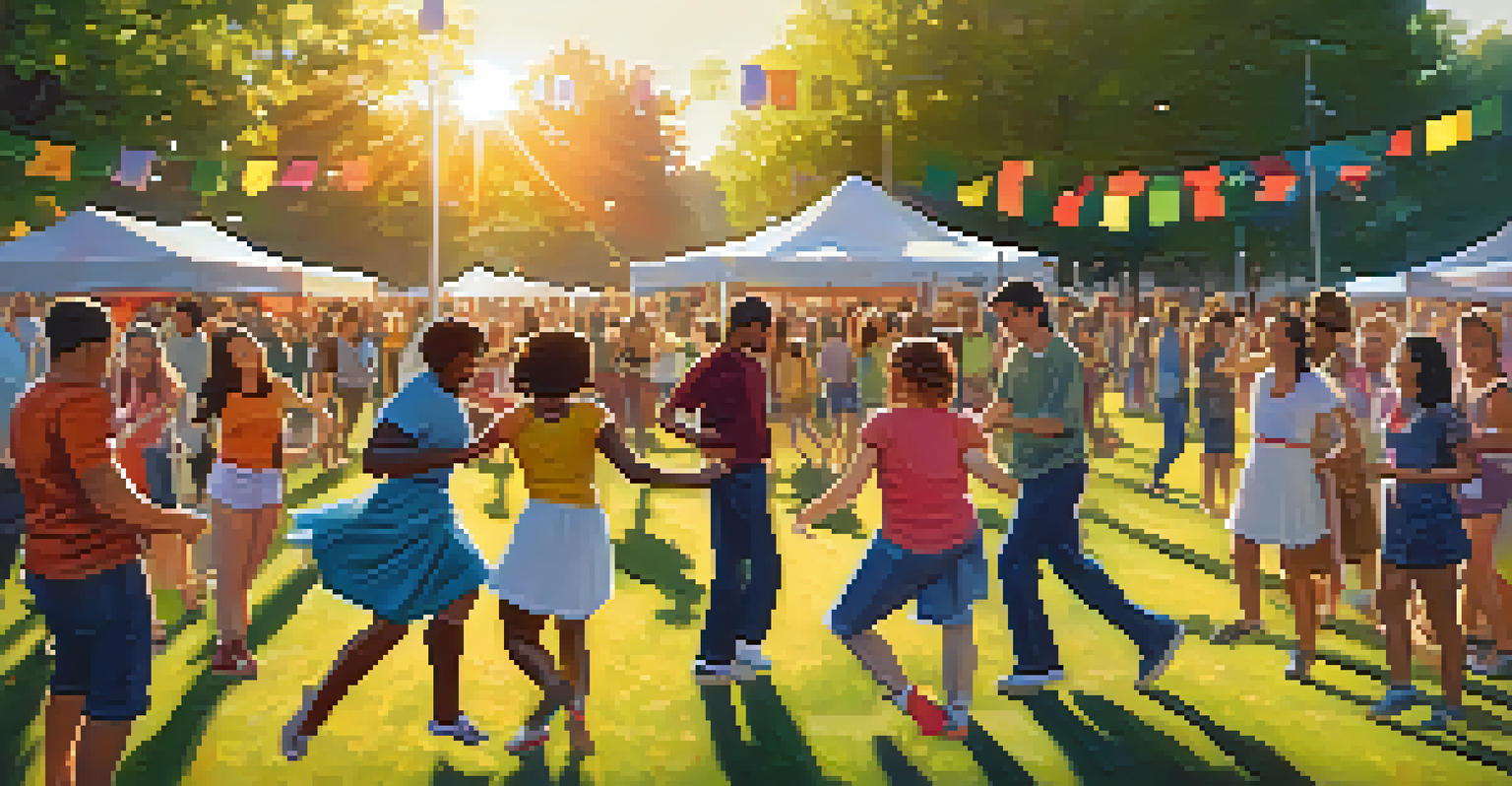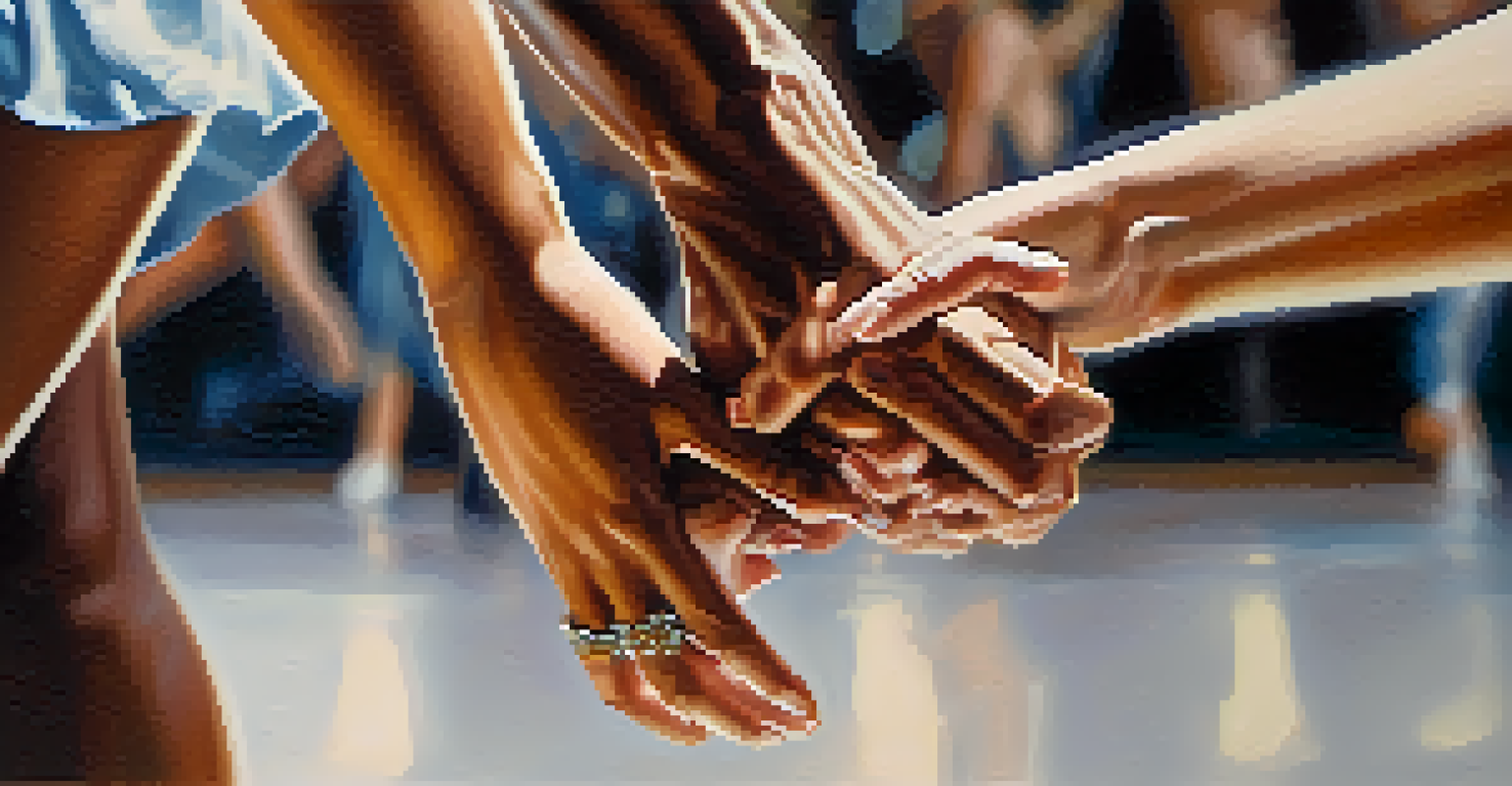Building Trust through Dance: Enhancing Social Connection

The Power of Dance in Building Connections
Dance has an incredible ability to bring people together, transcending language and cultural barriers. Whether it's a lively salsa class or a traditional folk dance, the rhythm and movement create a shared experience. In these moments, participants often find themselves forging connections that might not have happened in a more conventional setting.
Dance is the hidden language of the soul.
Imagine stepping into a dance studio filled with strangers. As the music starts, you quickly discover that every step and sway creates a sense of belonging. This shared vulnerability encourages openness, allowing individuals to express themselves and connect on a deeper level.
Through dance, we not only celebrate our differences but also find common ground. It’s a beautiful reminder that while we may come from diverse backgrounds, the joy of movement can unite us in unexpected ways.
Trust: The Foundation of Social Interaction
Trust is essential for any relationship, whether personal or professional. In social settings, the ability to rely on others creates a safe space for interaction. When we engage in activities like dance, we instinctively learn to trust our partners, which can translate into stronger community bonds.

Consider how dance often involves physical touch and coordination. This aspect requires a level of trust that can be challenging to establish in other environments. As partners navigate the dance floor, they rely on each other’s cues, building mutual respect and understanding.
Dance Builds Trust and Connections
Through shared movement and vulnerability, dance fosters strong relationships and community bonds.
This growing trust not only enhances the dance experience but also fosters friendships that extend beyond the studio. The connections made through shared movement can lead to lasting relationships built on a foundation of trust.
Creating Safe Spaces Through Movement
Dance classes often serve as safe havens where individuals can express themselves without fear of judgment. This environment nurtures creativity and allows participants to explore their identities. When people feel safe, they are more likely to engage with others and build connections.
The dance is a poem of which each movement is a word.
The physicality of dance can also release pent-up emotions, creating a cathartic experience. As individuals share these moments, they foster a deeper understanding of one another, which enhances their connection. It’s like peeling back layers of an onion, revealing the core of who we are.
In these welcoming spaces, dancers become a community. The shared experiences of joy, laughter, and even vulnerability create bonds that are difficult to break, reinforcing the importance of trust within the group.
The Role of Non-Verbal Communication in Dance
One of the most fascinating aspects of dance is its reliance on non-verbal communication. Through body language and movement, dancers convey emotions and intentions without saying a word. This silent dialogue can deepen connections, as individuals learn to interpret and respond to each other’s cues.
For instance, a simple hand gesture or a change in posture can signal a dancer’s readiness to lead or follow. This intuitive understanding fosters a sense of connection that is often more powerful than verbal interaction. It’s a dance of trust that speaks volumes.
Non-Verbal Communication Matters
Dance relies on body language, allowing dancers to convey emotions and intentions without words, deepening connections.
As dancers become attuned to each other, they develop a shared language that strengthens their bond. This enhances their overall experience, making it more meaningful and enriching, both on and off the dance floor.
Dancing Beyond the Studio: Community Impact
The impact of dance extends far beyond the walls of a studio. Community events, such as dance festivals or flash mobs, allow people to come together and celebrate through movement. These gatherings create opportunities for social interaction and foster a sense of belonging.
When communities engage in dance, they build trust not only among individuals but also within the community as a whole. The shared experience of learning and performing can unite diverse groups, breaking down social barriers and encouraging collaboration.
This ripple effect can lead to stronger community ties, promoting inclusivity and understanding. It demonstrates that dance is not only a form of art but also a powerful tool for social change.
Dance as a Tool for Healing and Resilience
Dance has long been recognized for its therapeutic benefits, helping individuals to process emotions and heal from trauma. In group settings, this healing can create a shared experience that fosters trust and connection. Participants often find solace in knowing they are not alone in their struggles.
For instance, dance therapy programs encourage participants to express their feelings through movement, which can be incredibly empowering. As they navigate their emotions together, they build resilience and strengthen their social ties.
Dance as a Healing Tool
Engaging in dance therapy helps individuals process emotions and build resilience while fostering a sense of community.
This collective healing journey reinforces the importance of connection and support, reminding us that we can overcome challenges together. In this way, dance becomes not just a form of expression but also a means of building trust and community.
Learning to Trust: Dance as a Metaphor
Engaging in dance can serve as a powerful metaphor for learning to trust. Just as dancers must rely on each other to create a seamless performance, we too must learn to trust the people in our lives. This process begins with small steps, much like the initial movements of a dance routine.
As dancers practice together, they develop a rhythm and understanding, which mirrors the way we build trust in relationships. Gradually, each step becomes more confident as we learn to lean on each other, both in dance and in life.

Ultimately, dance teaches us that trust is a journey, requiring patience, practice, and a willingness to be vulnerable. By embracing this metaphor, we can better understand the importance of trust in all aspects of our lives.
Conclusion: Dancing Towards Stronger Connections
In conclusion, dance is more than just a joyful expression of movement; it is a powerful tool for building trust and enhancing social connections. Through shared experiences, non-verbal communication, and the creation of safe spaces, dance fosters relationships that can last a lifetime.
As we engage with one another through dance, we create a community rooted in understanding, support, and trust. This collective experience not only enriches our lives but also strengthens the fabric of our communities.
So, whether you’re a seasoned dancer or a complete novice, consider stepping onto the dance floor. You might just find that the rhythm of trust and connection is waiting for you, ready to lead you into a world of deeper relationships.